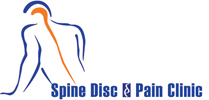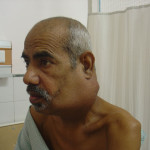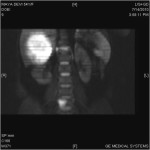Cancer Pain
Cancer Pain
Pain is a major symptom of cancer and occurs at all stages of the disease. In addition, pain is usually a hallmark of progression or metastatic spread, and 65 to 85 percent of people with cancer have pain when they develop advanced disease. In 10 to 20 percent of cancer cases, pain is difficult to treat, frustrating, and poorly controlled. Currently, opioid pharmacotherapy is the principal weapon in the fight against cancer pain; but when less invasive treatments are unsuccessful, invasive interventions should be added to optimize pain relief. Interventional pain procedures target neural and non-neural pain generators and neural blockade techniques provide excellent pain relief for neuropathic, sympathetic, nociceptive somatic, or visceral pain. Neural blockade techniques are broadly categorized into non-neurolytic and neurolytic blocks.
The management of patients with cancer pain can be a challenging task, even for physicians trained in cancer pain management Effectively relieving pain in cancer patients requires a range of treatment alternatives, including neural blockade when the patient’s pain no longer responds to opioid analgesia. The type of neural block selected is determined by the location and mechanism of the pain, the physical status of the patient, the extent of tumor spread, and the technical skill and experience of the person performing the intervention. Non-neurolytic blocks can provide safe and effective analgesia for the less serious conditions indicated above. Neurolytic blocks, with their potential for complications, are reserved for select patients who are unresponsive to standard analgesic pharmacotherapy and/or are at a more advanced stage of disease. However, few would question that aggressive intervention is often appropriate. Neurolytic nerve blocks offer an excellent option for the physician in the fight to control cancer pain. Such blocks can be easily utilized to help provide cancer pain relief in most of patients at the utmost needed times.
Agonizing Cancer Pain:
Effective Interventional Pain Management
Neeraj Jain, Rajeshree Jain1
Senior Consultant Spine & Pain Specialist, Spine & Pain Clinics & Sri Balaji Action Medical Institute,
Max Hospital, Pitampura, New Delhi & Sant Parmanand Hospital, New Delhi.
1Senior Consultant Gynecologist, Max Hospital, New Delhi.
Abstract:Pain is one of the most common symptoms associated with cancer. Pain is defined as “an independent and emotional experience associated with actual or potential tissue damage or described in terms of such damage.” Cancer pain or cancer-related pain distinguishes pain experienced by cancer patients from that experienced by patients without malignancies. Pain occurs in approximately one quarter of patients with newly diagnosed malignancies, one third of patients undergoing treatment, and three quarters of patients with advanced disease. In addition, this is one of the symptoms patients fear most. Unrelieved pain denies them comfort and greatly affects their activities, motivation, interactions with family and friends, and overall quality of life. The importance of relieving pain and the availability of excellent therapies make it imperative that physicians and nurses caring for these patients be adept at the assessment and treatment of cancer pain. This requires familiarity with the pathogenesis of cancer pain; pain assessment techniques; common barriers to the delivery of appropriate analgesia; and pertinent pharmacologic, anesthetic, neurosurgical, and behavioral approaches to the treatment of cancer pain.









